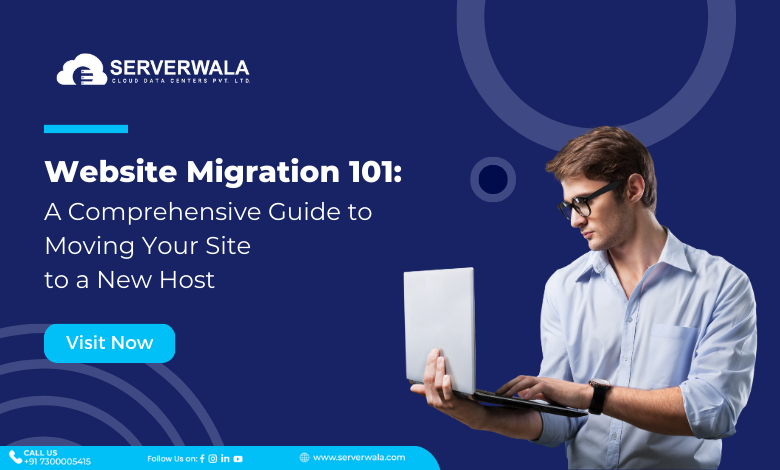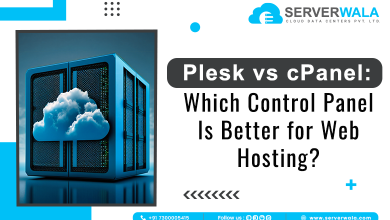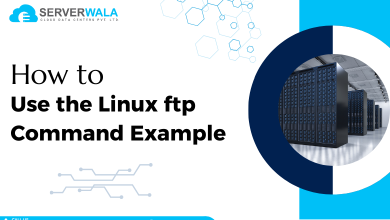Website Migration 101: A Comprehensive Guide to Moving Your Site to a New Host

Introduction
Embarking on the journey of website migration is a critical step in the life cycle of any online presence. Whether you’re seeking to enhance performance, achieve better security, or simply looking for a change in hosting services, understanding the nuances of web migration is essential. Welcome to “Website Migration 101: A Comprehensive Guide to Moving Your Site to a New Host,” where we delve into the intricacies of this process and provide you with a roadmap for a seamless transition.
What is Website Migration 101?
Website migration, in its essence, implies the process of transferring a website from one hosting platform to another. This transition can involve a change in servers, hosting providers, or even a shift in the website’s structure and technology stack. The motivations behind website migration are diverse, ranging from a desire for improved speed and security to the need for a more scalable hosting solution.
Why Does Website Migration Matter?
Performance Enhancement:
Migrating to a new host provides an opportunity to tap into enhanced server performance, resulting in faster page load times and a smoother user experience. This is specifically significant in a digital landscape where user expectations for website speed are higher than ever.
Scalability and Resource Optimization:
As websites grow, so do their resource needs. Migrating to a new host allows for scalability, ensuring that your website can accommodate enhanced traffic as well as resource demands without losing on performance.
Security Upgrades:
Web hosting environments differ in their security features. Migrating to a more secure host can be a strategic move to fortify your website against potential threats and vulnerabilities.
Technology Stack Evolution:
Technological advancements often render certain hosting environments outdated. Website migration enables you to adopt the latest technologies, frameworks, and server configurations to stay ahead in the digital race.
Also Read: Web Hosting Requirements for E-Commerce Websites
What is the Purpose of a Website Migration?
1. Choose your new host carefully.
In the labyrinth of website migration, the selection of a new host is akin to choosing a home for your digital identity. Delve deeper into web hosting migration considerations, evaluating not just current needs but forecasting future requirements. Website migration 101 principles underscore the importance of server performance, scalability, and security features, setting the stage for a resilient and adaptive online presence. The host becomes the backbone of your site’s evolution, ensuring compatibility with the ever-changing digital landscape and embodying the essence of migrating website to a new host.
2. Set up a Duplicator to facilitate the migration process.
Efficiency in website migration is synonymous with strategic automation, and tools like Duplicator emerge as digital architects. This step showcases the evolution of site migration, embracing technological prowess to simplify intricate processes. Duplicator not only expedites the journey but also minimizes the risk of errors during migration, aligning seamlessly with the principles of website migration 101 and showcasing the progressive nature of website migration services.
3. Import your site to the new host.
Navigating the mosaic of web migration, importing your site onto the new host is the crescendo of a meticulous symphony. As you traverse the website migration 101 landscape, uploading the Duplicator package and extracting its contents signifies the seamless transition of your digital entity. This step underscores the meticulous planning ingrained in an effective site migration checklist, ensuring that each website component finds its new home without missing a beat.
4. Change the host file to avoid any downtime during the migration.
In the ballet of website migration, downtime stands as the formidable foe to an uninterrupted user experience. Altering the host file on your local machine is not merely a technicality; it’s a strategic maneuver to preserve the sanctity of user interaction. This proactive action aligns with the tenets of a meticulously crafted site migration checklist, ensuring minimal disruption for your audience during the migration process, epitomizing the principles of website migration 101.
5. Create a MySQL database on the new host.
In the intricate tapestry of website migration, the database takes center stage as the unsung hero. Creating a MySQL database on the new host mirrors the meticulous planning inherent in web migration. Beyond the technicalities, this step emphasizes data integrity and a seamless transfer, embodying the principles of how to migrate website 101. It is a strategic move that ensures the lifeblood of your website—its data—is seamlessly transported to its new digital abode.
6. Begin the Duplicator migration process.
As the curtains rise on the migration process, initiating the Duplicator migration is the pivotal scene in this digital drama. This tool, emblematic of web migration expertise, becomes the conductor orchestrating intricate details. From file transfers to database configurations, the Duplicator ensures a harmonious integration of your website components into the new hosting environment. It is the embodiment of migrating website services, reflecting the finesse and precision required for a successful transition.
7. Update your domain name servers (DNS) to point to the new host.
The final act in the grand opera of website migration is the DNS update. This action marks the point of no return, where your domain’s navigation undergoes a transformative shift. As you traverse the nuances of what is site migration, updating the DNS ensures that all virtual roads lead to your new hosting environment, affirming the completion of a meticulous, purposeful, and successful website migration.
Also Read: Web Hosting Security Trends: Protecting Your Website from Cyber Threats in 2024
Conclusion
In the intricate dance of website migration, the principles outlined in “Website Migration 101: A Comprehensive Guide to Moving Your Site to a New Host” underscore the fusion of technical expertise and strategic planning. The foundational step of choosing a new host requires a meticulous evaluation, considering factors like server performance, scalability, and security features. Embracing website migration 101 principles sets the stage for a resilient and adaptive online presence, ensuring that the chosen host aligns seamlessly with the evolving needs of your digital entity.
Automation becomes a key player in this journey, with tools like Duplicator streamlining intricate processes and minimizing the risk of errors. The inclusion of these technological advancements aligns with website migration 101 principles, facilitating an efficient and error-resistant migration journey. As you navigate the nuances of importing your site to the new host, adherence to a comprehensive site migration checklist ensures a seamless transition, with each website component finding its new home effortlessly.
Mitigating downtime becomes a strategic imperative, achieved through actions like changing the host file to minimize disruptions and uphold an uninterrupted user experience. The culmination of the migration journey involves updating your domain’s DNS, marking the completion of a meticulous, purposeful, and successful website migration. Having these insights, you now have a way to navigate the web migration horizon. Stay tuned with Serverwala for further exploration into specific facets of web migration in our ongoing series, continuing to empower you on your digital journey.





